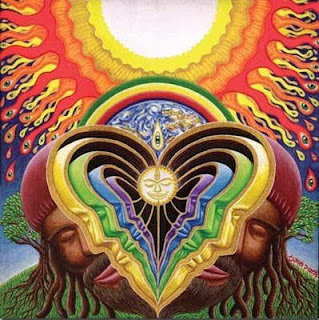Wanted to share some quotes from Kenneth Folk (who practiced Vipassana in the Mahasi tradition for many years, until he finished the path according to its teachers). This is just one perspective, but I find it intriguing.
Basically, he says there are two modes of practice: "developmental," which uses phenomena (such as sensations and thoughts) to develop toward a physio-energetic completion, and "awakening," which is primordial awareness coming to recognize itself. Those that just target the former will likely only lead to the former realization, whereas those that target the latter can result in both.
https://www.dharmaoverground.org/discussion/-/message_boards/message/106307
---------------------
[I]t's unlikely that [Ramana Maharshi] became an arahat in the moment of his initial awakening. Awakening doesn't depend upon development; it is its own attainment. Arahatship, on the other hand, seems to be directly correlated with the kundalini phenomenon Ramana mentioned (see my essay above), and is the culmination of a developmental process. This is why I differentiate Awakening/Realization and development. The former is the noticing of that which is prior to the arising of time. The latter is completely dependent on time and the physical world.
...
If Ramana is correct, this is good news for pure Advaitists. They need not fear missing out on the fruits of development even if they never spend a moment on practices that specifically target development. All that is necessary is to dwell as primordial awareness. By the way, the common denominator between pure concentration practice and dwelling as the "I AM," is... concentration. Concentration, coupled with insight, leads to developmental enlightenment. Ramana's practice promotes both concentration and insight. All of this makes perfect sense when seen through the lens of the Buddhist maps. The non-dual aspect is, of course, not addressed in Theravada, which is why we have the Mahayana. If Hinayana were complete, there would be no need for Mahayana or Vajrayana.
...
For the purposes of this discussion, I'm defining Awakened in a particular way. In this context, Awakened is not synonymous with arahatship. Rather, it refers to a perspective in which primordial awareness knows itself. Lot's of people who are not arahats have access to this perspective. And it appears, based on my observations of and conversations with some people who I believe are arahats, that not all arahats have access to this perspective. On the other hand, maybe they just don't value this perspective; but I would say that it amounts to the same thing, as this perspective is considered the highest understanding by virtually every school of enlightenment except Theravada. To know it is to love it. :-)
We are now at the very heart of the debate between "Hinayana" and "Mahayana." How is it possible that people can spend their whole lives meditating and not come to the same conclusions?
For me the answer is simple: If people would stop arguing long enough to actually master the other camp's practice, they would value both perspectives. Too often, people dig in and attempt to defend their own limited understanding rather than branching out and embracing multiple understandings. It takes a lot of work. You can't just say, "I'm enlightened and therefore anything I don't already know about doesn't matter." You have to keep practicing even after arahatship because there is always something you haven't yet understood.
So, to answer the question directly, there are arahats who are masters of vipassana and samatha but who have never committed themselves to the mastery of non-dual practice and thus do not understand the full implications of Awakening.
...
You could make the case that both Awakening and Arahatship are enlightenment--which gives us two distinct situations, both going by the name "enlightenment." I think that some people reject the idea of "two enlightenments" as aesthetically displeasing. I tend to agree that, as an aesthetic, the idea of two enlightenments fails to inspire. Reality, however, has rarely shown itself to be subordinate to my aesthetic concerns.
...
I don't think the Theravada ideal is both development and Awakening. I think it's just development as I'm defining it. The Bumese, for example, don't talk about "turning the light around," "awareness knowing itself," "realizing what has always been true," etc, all of which are recurring themes in Advaita, Mahayana, and Vajrayana. They seem to take enlightenment as an entirely linear process that fundamentally changes the practitioner over time. Theravada, notwithstanding the occasional instant-arahat story in the suttas, is about as far as you can get from a sudden-enlightenment school.
Among those who do talk about awareness knowing itself (see Mahamudra, for example), there is wide consensus that this Realization is by far the most important thing to have, and that pure developmentalists are somehow missing the boat.
I like Theravada, but I like to keep in mind that it is the little brother of the enlightenment schools in spite of its self-serving claims to greater authenticity.
...
I will say that someone who fully commits to the non-dual route and (accidentally) develops to the point of arahatship has completed the two-fold program. But someone who reaches arahatship by doing only developmental practices may or may not stumble hard enough on the non-dual to get hooked and explore it further. In that case it would take some outside influence to encourage that yogi to keep practicing, as s/he would intuitively feel done.
...
The thesis I'm offering is that by becoming absorbed in the awareness you will progress along the developmental path, thus killing two birds with one stone. This position seems to be supported by such luminaries as Ramana Maharshi and Jack Kornfield, among others. Mind you (and getting back to the point I made in the essay), pure non-dual teachers (e.g. Tolle, Adyashanti, Ganga-ji, Mooji) don't like to talk about development, presumably because they believe it is a distraction. (How can you become absorbed in the awareness now if you are planning your future awakening?) Nonetheless, I'm giving you the holistic understanding for better or worse: if you do the non-dual practice properly, you will develop just as efficiently as if you did pure vipassana.
The only down side to this is that to some people all this talk of awareness knowing itself is incomprehensible gibberish. Fine. For those people, I recommend vipassana. This is really a can't-lose situation. The important thing is to be committed to some kind of practice, to do it every day, and to take intensive retreats whenever possible and do it some more. The finite part of it will eventually be finished and the infinite part will keep you entertained for a lifetime.
...
My sense is that people who are Awake tend to talk about it a lot, at least when the conversation turns to mysticism. People talk about what they value. So if somebody talks for a half-hour about meditation but doesn't say anything about awareness, I suspect that awareness is either not known to them or not important to them. For concrete examples, compare the speech of a Mahasi master with the speech of a dzogchen master or a Mahamudra master. The dzogchen and Mahamudra guys are all about awareness knowing itself, whereas the Mahasi guy will talk about body sensations or noting mind states. These are two very different orientations and I think it would be wrong to conclude that these people are all having the same experiences but talking about them differently.
...
My response to a question from a friend about whether to combine vipassana and the "I AM:"
I like to use the source/river analogy. The Source is where things have not yet diverged into subject and object. One definition of enlightenment would be unfettered access to the Source. Both the "I AM" perspective and the vipassana perspective are downstream from the Source. That's fine, as most people will do a lot of downstream practice before they realize that the Source is always available. Your question is which practice to do, or if they should be combined.
"I AM" is so close to the Source that it does not admit the kind of investigation that is vipassana. Vipassana is slightly further downstream from "I AM." "I AM," because it is so far upstream, is upstream from suffering. What's not to like? To introduce vipassana to the "I AM" is to pull yourself further downstream than you need to be, into a perspective that admits suffering. Since the "I AM" does everything vipassana does (i.e. it efficiently develops the psychic anatomy toward arahatship), and has the added advantage of being upstream from suffering, there is no percentage in doing vipassana if you are able to become absorbed in the "I AM." It would be like stepping over dollars to pick up quarters.
So, anytime you are able to become absorbed in the "I AM," AKA the no-dog, just do that. If that isn't happening for whatever reason, downshift to vipassana. Just realize that although investigating the no-dog with vipassana or doing vipassana from the point of view of the no-dog are perfectly good and useful practices, they are in fact vipassana; once you introduce that level of investigation you have pulled yourself downstream from the pure no-dog for no good reason.
...
Actually, descriptions of stream entry/1st path, as defined in the Theravada tradition, are remarkably consistent across individuals. That's one of the things that really drew me to vipassana in the first place. My teacher told me that the Progress of Insight was so accurate, and that it described a process that was so hard-wired into the human body/mind, that a teacher could accurately pinpoint a student on the map and watch her or him go through the 16 insight knowledges one after another, just as if it were scripted. And this would happen irrespective of whether the student knew or had even heard of the map. I have since found this to be true again and again; first path is not at all nebulous. Same for second path. After that, it gets harder; teachers don't even agree on exactly where to put the dividing line between 2nd and 3rd path. But it gets easier at 4th path, which is a very easy call, as you know when your insight disease goes away. Post 4th path, it gets fuzzy again and there are all sorts of ways that enlightenment can manifest, which is why I started this discussion. I wanted do go deeper than the usual it-all-ends-up-in-the-same place talk and explore the reality of it.






